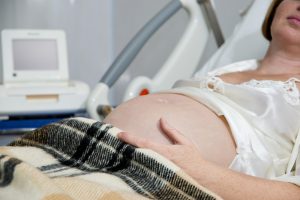
A new study has revealed why many women experience nausea and vomiting during pregnancy – and why some women, including the Duchess of Cambridge, become so sick that they even have to go to hospital. The culprit is a hormone produced by the fetus – a protein called GDF15. However, how sick the mother feels depends on how much of the hormone is produced by the fetus and how much exposure the woman was to this hormone before pregnancy. The discovery, published in Nature, suggests a way to prevent pregnancy sickness by exposing mothers to GDF15 before pregnancy to boost their resilience.
Nausea During Pregnancy Can be Dangerous
Up to seven out of ten pregnancies are affected by nausea and vomiting. A severe form of morning sickness is also known as hyperemesis gravidarum. This can lead to increased vomiting within a 24-hour period. Other symptoms include loss of appetite, extreme fatigue, drowsiness, dehydration, and water-electrolyte imbalances. In some women – estimated to be between one and three in every 100 pregnancies – the nausea can be extremely severe and even endanger the life of the fetus and mother. Sometimes intravenous fluid replacement is necessary to prevent dangerous fluid loss.
Hyperemesis gravidarum is the most common cause of hospitalization in women in the first three months of pregnancy. Although there are some therapies for treating nausea in pregnancy and they are at least partially effective, widespread ignorance of the condition and fear of taking medication during pregnancy mean that many women with hyperemesis gravidarum are inadequately treated.
Certain Hormone Responsible for Hyperemesis Gravidarum
Until recently, the cause of pregnancy sickness was unknown. Some evidence from biochemical and genetic studies suggests that this may be related to the placenta’s production of the hormone GDF15, which acts on the mother’s brain, causing her to experience nausea and vomiting. Now an international study involving scientists from the University of Cambridge and researchers in Scotland, the US and Sri Lanka has made major progress in understanding the role of GDF15 in nausea during pregnancy, including hyperemesis gravidarum. The team examined data from women recruited for a number of studies, including at Rosie Hospital, (a maternity hospital in Cambridge) part of Cambridge University Hospitals NHS Foundation Trust, and Peterborough City Hospital, North West Anglia NHS Foundation Trust. They used a combination of approaches, including human genetics, new methods for measuring hormones in the blood of pregnant women, and studies on cells and mice.
The researchers showed that the amount of nausea and vomiting a woman experiences during pregnancy is directly related to the amount of GDF15 produced by the fetal part of the placenta and passed into her bloodstream, as well as how sensitive the Mother reacts to the effects of this hormone. The more sensitive she is to the hormone, the sicker she becomes.
GDF15 is produced in small amounts in all tissues outside of pregnancy. How sensitive the mother is to the hormone during pregnancy depends on how much of it she was exposed to before pregnancy – women with normally low levels of GDF15 in their blood are at higher risk of developing severe nausea and vomiting in pregnancy. The team found that a rare genetic variant that puts women at much higher risk of hyperemesis gravidarum is associated with lower hormone levels in the blood and tissues outside of pregnancy. Likewise, women with the congenital blood disorder beta thalassemia, which causes them to have naturally very high levels of GDF15 before pregnancy, experience little or no nausea or vomiting.
Targeted Treatment
Mice exposed to acute, high levels of GDF15 showed signs of loss of appetite, suggesting they were suffering from nausea. However, mice treated with a long-acting form of GDF15 did not exhibit similar behavior when exposed to acute levels of GDF15. Researchers believe that building a woman’s tolerance to the hormone before pregnancy could be key to preventing disease. Researchers are confident that preventing GDF15 from accessing its highly specific receptor in the mother’s brain will ultimately be the basis for effective and safe treatment of severe morning sickness.


